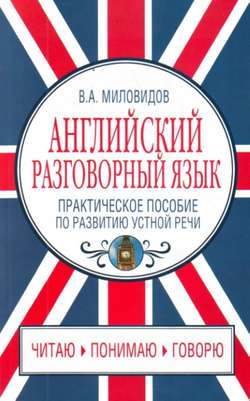Читать книгу Английский разговорный язык. Практическое пособие по развитию устной речи - В. А. Миловидов - Страница 11
На сайте Литреса книга снята с продажи.
2. Экономические учения
(Economics)
Monetarism
ОглавлениеOne of the principal monetarist propositions is the association between money growth and inflation: inflation is produced if sustained money growth exceeds the growth of output. If a government wants to end inflation or produce deflation, money growth must be lower than the growth of output. In the years since World War II, almost all countries experienced inflation. Some countries, such as Chile, Israel, Brazil, Argentina, Italy, Japan, Turkey, and the United States have increased or reduced inflation at different times by speeding up or reducing the rate of money growth. In some of these countries the changes in money growth and inflation have ranged over hundreds or thousands of percentage points.
The Federal Reserve System (the US Central Bank) increased money growth in the late sixties to finance government spending for the Vietnam War and for the War on Poverty. As the result inflation increased. By the late seventies money growth was nearly 7 percent a year on average and inflation reached an 8 percent average. On the whole prices doubled in less than a decade. Money growth slowed and remained low after the middle eighties. In the five years ending in 1991, inflation and money growth were back at the levels of 1965 to 1969. Table
1 shows these and other periods.
U.S. Money Growth and Inflation
(compound annual rates in percent)
Money Growth Inflation
1960–64 2.8 1.6
1965–69 4.9 3.7
1970–74 6.0 6.0
1975–79 6.9 7.9
1980–84 6.6 7.3
1985–89 7.2 3.5
1987–91 4.4 3.8
There is a general association between money growth and inflation, but this relation is not mechanical. Although average money growth remained high in the years from 1985 to 1989, inflation fell. It shows that money growth in excess of output growth is a necessary but not the only condition for inflation.
A second monetarist idea is the relation between inflation and the interest rates. When inflation is going to be high, interest rates on the open market are high. In addition the foreign-exchange value of a currency falls relative to more stable currencies. Interest rates in 1989 reached 8,000 percent a year in Yugoslavia. The Yugoslav dinar depreciated against the dollar from 0.03 to 1, to 10.6 to 1. At the same time Brazilian currency (under various names) fell from 0.01 to 177. The relation betweeen inflation and money growth is accounted for by the fact that high growth of money causes a flight from money that makes the currency worthless. Governments can control these effects of inflation for a short time, but they cannot do it permanently.
Currency depreciation or appreciation can be affected by numerous factors, such as growth of defense spending, government purchases, tax rates, productivity growth at home and abroad, and foreign decisions. Among them inflation is the most important: sustained inflation induces depreciation, and disinflation induces appreciation, as monetarists say.
A third monetarist proposition concerns the relation between inflation and output. When inflation increases, output often rises for a time above its trend rate. Deflation has the opposite effect, and recessions follow.
These monetarist assumptions about inflation, interest rates, exchange rates, and output, as well as about their interrelation are now widely accepted by policymakers. Central bankers follow guidelines for money growth, as they are well aware nowadays of the risks and the costs of inflation, their principal task being the maintenance of price stability.
Слова и выражения:
accept – принимать
affect – оказывать воздействие
annual – годичный, ежегодный
appreciation – повышение стоимости
average – средний
aware – сознающий, понимающий
compound – совокупный, составной
concern – забота, озабоченность; быть озабоченным
currency – валюта
decade – десятилетие
defense – оборона, защита
deflation – дефляция
depreciate – снижаться в стоимости, девальвироваться
depreciation – снижение стоимости, девальвация, амортизация
dinar – динар
disinflation – дизинфляция
exceed – превосходить
excess – избыток, превышение
exchange – обмен
flight – полет, побег, бегство
guideline – контрольные показатели
induce – побуждать, возбуждать, вводить
interrelation – взаимодействие
maintenance – поддержание
mechanical – механический
monetarism – монетаризм
permanently – постоянно
policymaker – политик, организатор, разработчик политических решений
poverty – бедность
proposition – утверждение, предположение
recession – спад в экономике
relative – относительный; здесь: относительно
slow – медленный; замедлять
stable – стабильный
sustain – поддерживать
value – ценность, стоимость
worthless – обесценившийся
money growth – рост денежной массы
speed up – ускорять
range over – здесь: превышать
percentage point – процентный показатель
on average – в среднем
compound annual rates – совокупный годичный показатель
in excess of – превышающий
interest rates – процентные ставки
foreign-exchange value – обменная стоимость
flight from money – бегство от денег
tax rates – налоговые ставки
foreign decisions – решения относительно международных проблем
trend rate – обычный для экономики показатель
well aware – хорошо понимающий, хорошо сознающий
Географические названия:
Chile – Чили
Israel – Израиль
Brazil – Бразилия
Argentina – Аргентина (также the Argentine)
Italy – Италия
Japan – Япония
Turkey – Турция
Vietnam – Вьетнам
Yugoslavia – Югославия
Exercise 2
Answer the questions:
1. Under what general conditions is inflation produced?
2. What does a government have to do if it wants to put an end to inflation?
3. Why did the Fed increase money growth in the US in the late sixties?
4. What is the relation between inflation and the interest rates?
5. Why do people «fly from money» in the periods of high growth of money?
6. What factors play key roles in the currency depreciation process?
7. What is the relation between inflation and output?
8. In what way do deflation and output interrelate?
9. What is the trend output rate?
10. What effect does monetarism have on real economic policies?
